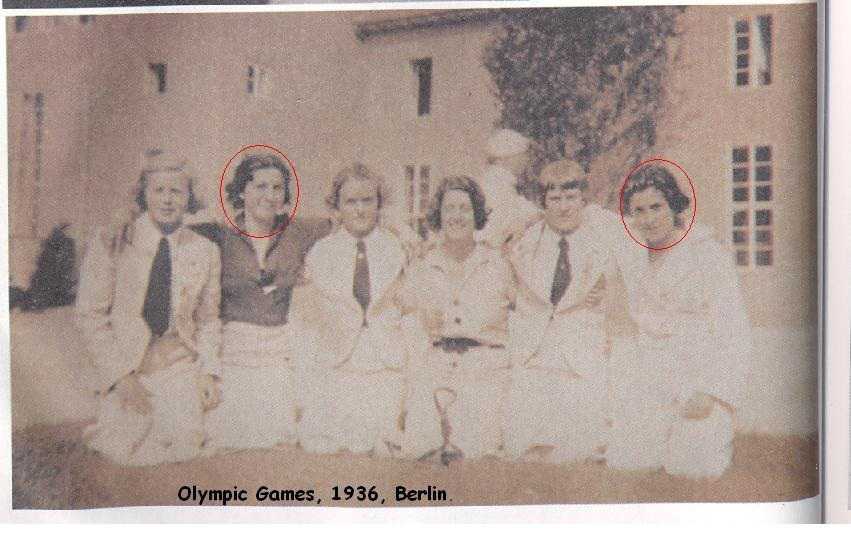We can group Muslim sportswomen into three based on their participation in international games. The first group of women is composed of those who are not following the Islamic dress code, some of whom do not believe that such dress code (ie, headscarf) is Islamic. Historically, this group has been involved in international games for much longer than the other two, since modernists in many Muslim societies viewed sports as a means of breaking women’s segregation and including them in public life in the early 20th century. The first Muslim women attended the 1936 Berlin Olympics: Suat Aşeni and Halet Çambel represented Turkey in fencing, 36 years after first women were allowed to compete in the Olympic Games. Turkey, as a country which accepts international dress regulations for different branches of sports, does not have any problem in sending its successful sportswomen to the Olympic Games, as long as the sportswomen follow the international dress codes in sports.

The second group of Muslim women is composed of those who believe in modesty and prefer observing Islam in terms of the dress code as well. These women often face other rules, such as those in international games, which forbid their headscarf based on safety and security concerns. Muslim sports activists propose “safe hijabs” to negotiate with security concerns and suggest alternative styles for different branches. FIFA, for instance, was in contact with designers for an approvable headgear to be used in international soccer games when this article was being written.
A third group of Muslim women however, are not allowed to participate in sports, not because of their religious choices or international game regulations, but because of the regulations of their own country. Iranian sportswomen are an example to this, since the branches of sports Iranian women are allowed to participate are limited: Lida Fariman, Manije Kazemi (archery), Marjan Kalhor (skiing), and Sara Khoshjamal Fekri (taekwondo) are four examples, who have represented Iran in the Olympic games in earlier years within clothes regulated by their country. In these Iranian cases, the dress codes of the sport are in line with Iran’s national dress code for modesty to be preserved. Similarly, and unfortunately, there are countries, such as the Southeast Asian nation of Brunei, Saudi Arabia and Qatar, which have not sent any single woman to the Olympic games until 2012. Such outfit regulations influence female citizens of these countries whether the sportwomen themselves are Muslims or not, since they are bounded with the codes both at national and at international level.
What all these groups of Muslim women seem to be sharing is that their bodies are at the center of heated ideological, political, or religious debates and contestations at national and international platforms; as these women are subjected to different forms of idealized discourses and pressures (of secularist and Islamist patriarchies) on multiple fronts.
The fatwas regarding sports are very explanatory in understanding the “Islamic” attitudes. Although Islamic rules do not necessarily pose an obstacle to the participation of women in sports, they can shape the sporting experience of women as gendered subjects. All of the fatwas on Islamic web sites concerning physical exercise begin with the importance of sports for health and encourage individuals to be physically active with reference to hadiths, with minor warnings on violence, fanaticism, or hooliganism. When it comes to women’s involvement in sports, the fatwas start using a more regulative language in details. Almost all of the suggested regulations and rules about women’s involvement in sports are related to gender segregation, and, more importantly, bodily exposure. Fatwas specify several rules that must be followed: First, men and women must be segregated, since mixed environments may open channels for seduction, temptation and corruption. Fatwas reject any physical exercise that stir sexual urge or encourage moral perversion such as women practicing dancing and being watched by the public since each one of the these acts are coded as “sexual(ly appealing).” Indeed, those within Saudi Arabia who oppose the inclusion of women in sports do so because future implications and consequences of women’s involvement in sports might be un-Islamic although there is nothing in Islam that prohibits women from physical activity or even competitive sports.

Most of the time, the most convenient sport for Muslim sportswomen who have concerns about their body movements or Islamic veiling are the branches that do not require too much body movements – the movements which are perceived as ‘sexually appealing’ such as movement of hips (running) and breasts (jumping). The most popular sports for women from predominantly Muslim countries have been athletics, power lifting, fencing, archery, martial arts and table tennis. Such branches are more convenient especially if women are professionals and need to spend hours everyday for training. Women can easily find spaces for training and do not need to seek for special dedicated spaces.
via Muslim Women in SPORTS.
http://muslimwomeninsports.blogspot.com/

Leave a Reply